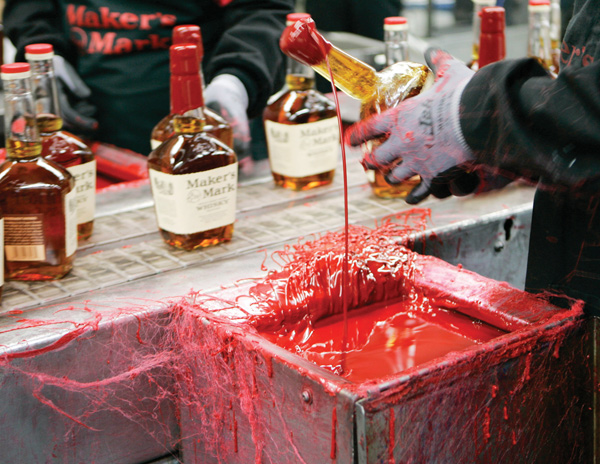

Monday, August 18, 2014

A bottle of Maker’s Mark bourbon is dipped in red wax during a tour of the distillery in Loretto, Ky. Kentucky bourbon makers have stashed away their largest stockpiles in more than a generation due to resurgent demand for the venerable brown spirit.
Associated Press
LOUISVILLE, Ky.
In a business where patience is part of the process, Kentucky bourbon makers are making a big bet by stashing away their largest stockpiles in more than a generation.
To put it in bartenders’ lingo: Distillers are putting up the tab for millions of rounds of bourbon years before they are even ordered. The production poses an inherent risk, but hitting the moment right — a big supply meshing with big demand — could mean a serious payday for companies big and small.
Missing the target would leave bourbon makers awash with supply and leave future production in question, particularly for craft distilleries that have seen a surge in popularity.
“People keep asking us, ‘When will the bubble burst?’” said Eric Gregory, president of the Kentucky Distillers’ Association.
For most in the business, the answer is not anytime soon.
Large companies are banking on continued international demand from places such as China and a culture in the U.S. that currently has a taste for bourbon, which has to be aged at least two years in new charred oak barrels.
“We are busier than I ever could have imagined,” said Chris Morris, master distiller at Brown-Forman Corp., producer of Woodford Reserve and Old Forester bourbons.
Last year, Kentucky distilleries filled 1.2 million barrels of bourbon — the most since 1970, according to the Kentucky Distillers’ Association. Inventory has topped 5 million barrels for the first time since 1977, the group said.
Production has surged by more than 150 percent in the past 15 years in Kentucky — home to 95 percent of the world’s bourbon production.
The last time the industry spiked production in the 1970s, distillers ended up with a glut when demand went into a tailspin.
Back then, the industry had grown stale and many consumers switched allegiance to vodka, Scotch and other spirits.
Now, distillers are constantly dabbling with premium small-batch offerings or putting new twists on recipes and flavors and companies are looking to real-time data from the digital world.